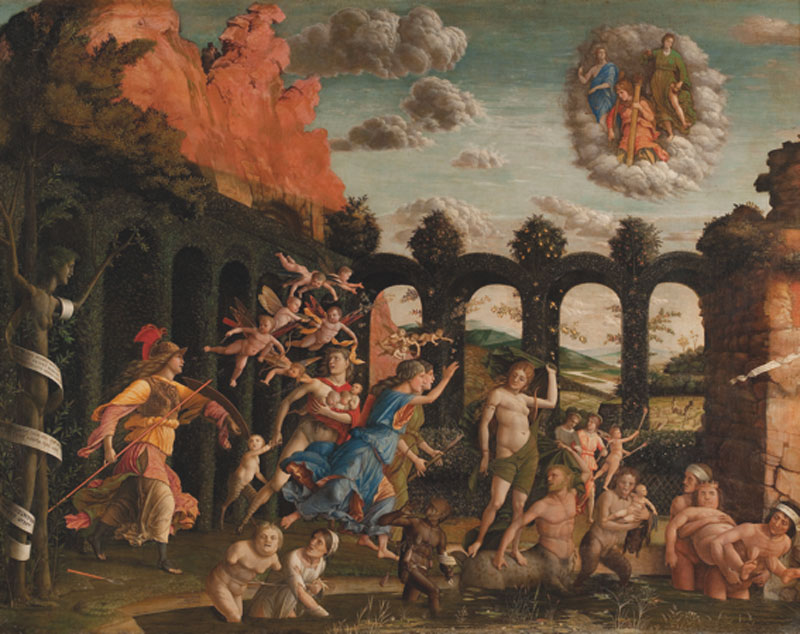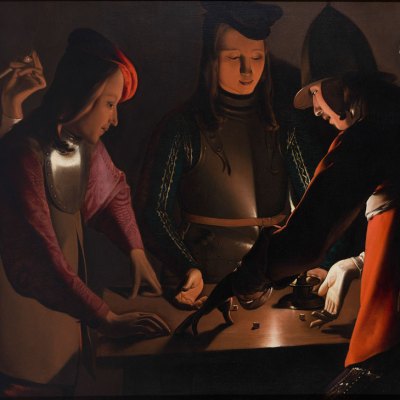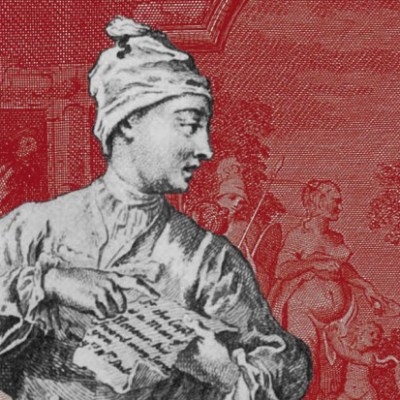Orlando Furioso by Ludovico Ariosto lays claim to being one of the most influential works of European literature, not least due to the artistic response it provoked – from the Tiepolo frescoes in the Villa Valmarana to the celebrated illustrations of Gustave Doré. Rather than examine this critical history, Guido Beltramini and Adolfo Tura’s exhibition at the Palazzo dei Diamanti, marking the 500th anniversary of the publication of Ariosto’s epic poem in Ferrara in 1516, instead delves into the poet’s imaginative universe.
Portrait of a Gentleman, c. 1510–15, Bartolomeo Veneto. The Fitzwilliam Museum, Cambridge
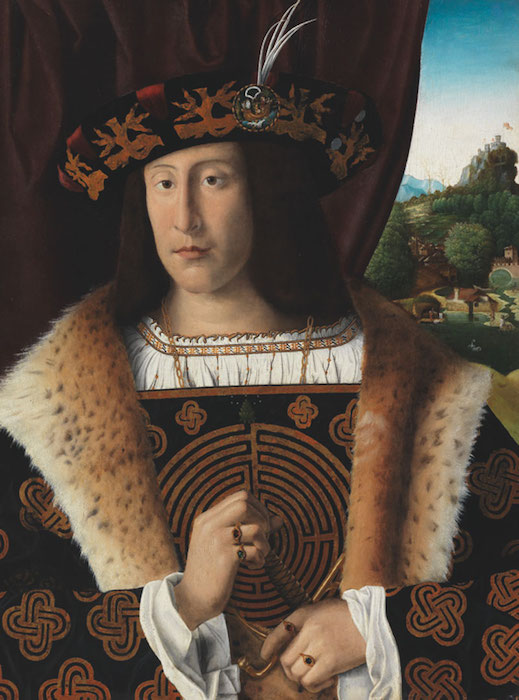
The show’s premise and subtitle is ‘Cosa vedeva Ariosto quando chiudeva gli occhi’ (what Ariosto saw when he closed his eyes). Its evocation of the fantastical realms that the poet created for his chivalric romance is achieved through an examination of the very real world of Ariosto, and the literary and visual sources that fired his imagination. We are offered a journey through the pages of this long and famously complex work (46 cantos and 38,736 lines, no less), and the book – this one and others – is pivotal to each gallery, acting as a catalyst for a narrative that is told through a dramatic and diverse assemblage of material. The problem with ‘thesis’ exhibitions is that they don’t have to be illustrated with great works of art. This one, a work of the imagination in its own right, is full of masterpieces.
The Battle of Roncisvalle, c. 1475–1500. Victoria and Albert Museum, London
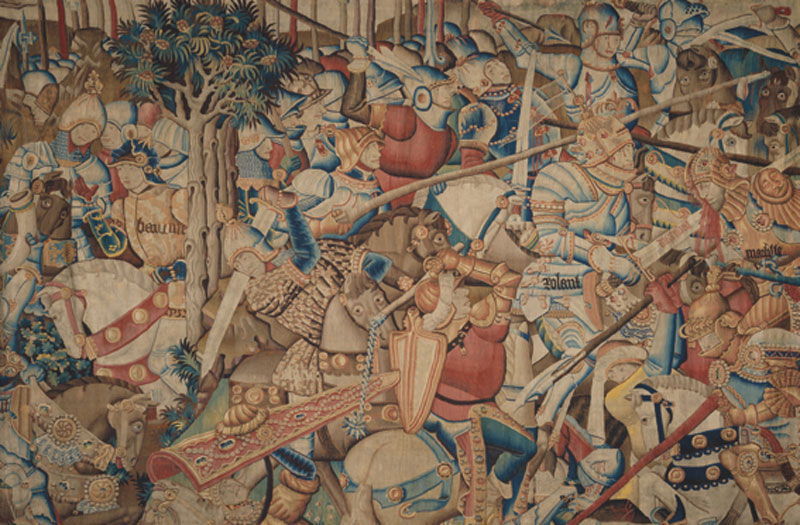
Matteo Maria Boiardo’s Orlando Innamorato (1483), needless to say, is the first book; Ariosto simply took up the tale of this earlier romance which left Boiardo’s cast of characters lost in the labyrinth of a wild wood. On the breast of Bartolomeo Veneto’s portrait of an unknown gentleman, dated around 1510–15, is this labyrinth and other metaphorical motifs alluding to the real and moral dilemmas and precarious fates that plague the heroes of medieval romance. Suddenly we are plunged into the gloom of this wild wood; the tall glass cases suggestive of trees present sole resonant objects like the carved elephant tusk long believed to be the horn of Orlando or the oldest surviving jousting helmet with its cimier intact, in this case gilded and silvered buffalo horns. It is a convenient conceit for a mixed display of light-sensitive material, which includes a large 15th-century tapestry depicting the legendary Battle of Roncesvalles of 778 (here Orlando slices off the head of a Saracen king), to small illuminated manuscripts and imaginary battle scenes drawn by Antonio del Pollaiolo, Leonardo and Ercole de’ Roberti.
Helmet with cimier, 14th century. Kunsthistorisches Museum, Vienna
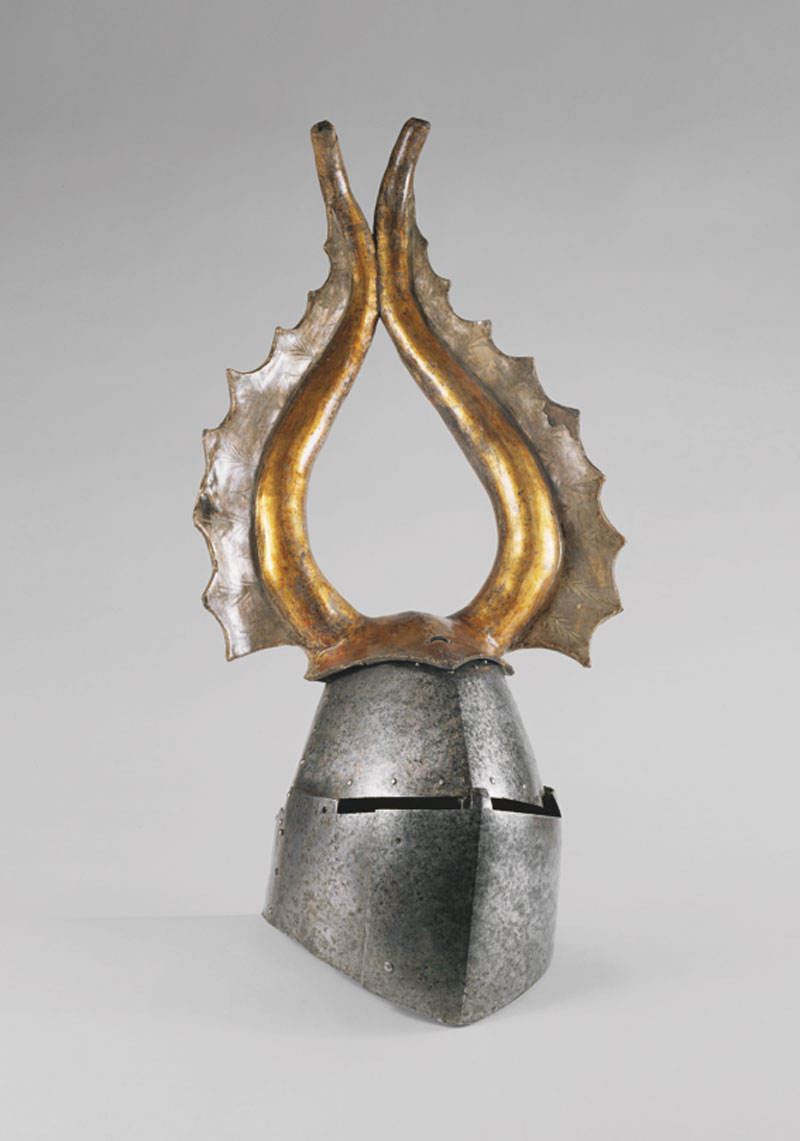
Boiardo had conflated the histories of Charlemagne and his Christian paladins with both the Chanson de Roland (Orlando in Italian) and the legends of the Arthurian knights, which added love interest, magic and fantasy. Ariosto appropriated classical sources, too. While Filarete’s equestrian bronze has Hector – the Este dynasty of Ferrara traced their lineage back to Homer’s hero – in contemporary dress, it is striking to find Durer’s drawing of Odobert of Habsburg alluding to Maximilian I’s desire to claim King Arthur, and an illumination of Arthur playing chess with Faramon in a manuscript made for the Sforzas. Milan was not the only Renaissance court eager to regain Camelot.
Intriguing hypotheses of what Ariosto might have seen or read are offered throughout, but one image seems to reverberate through the pages of Orlando Furioso: Mantegna’s Minerva Expelling the Vices from the Garden of Virtue (1502), commissioned by Isabella d’Este in Mantua. Its grotesque monsters appear to have provided a model for Ariosto, and its human-cum-tree evokes the knight Astolfo’s fate when transformed into a speaking myrtle. Displayed alongside is an extraordinary anthropomorphic male-female lira da braccio of 1511.
Lira da braccio, 1511, Giovanni d’Andrea Veronese. Kunsthistorisches Museum, Vienna
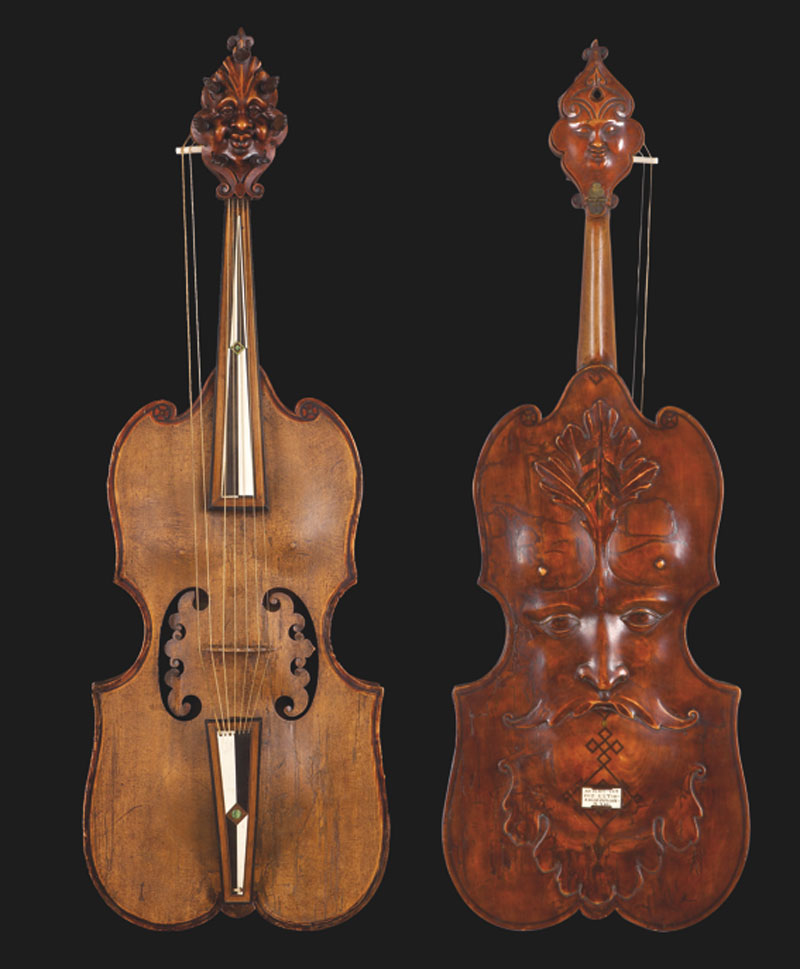
Orlando is driven to madness by his unrequited love for the pagan princess Angelica; Astolfo flies away on a hippogriff and then to the moon on a chariot in order to recover Orlando’s wits. Monsters, madness and the moon offer more glorious visual diversions in a narrative – and a show – too complex to condense into this small space. We conclude with the end of the chivalric ideal – in the form of an arquebus which Orlando derides as a dishonourable device for killing valiant men at a distance – and the genre’s last literary last gasp, Cervantes’ Don Quixote.
‘Orlando Furioso 500 Anni’ is at Palazzo dei Diamanti, Ferrara, until 29 January, 2017.
